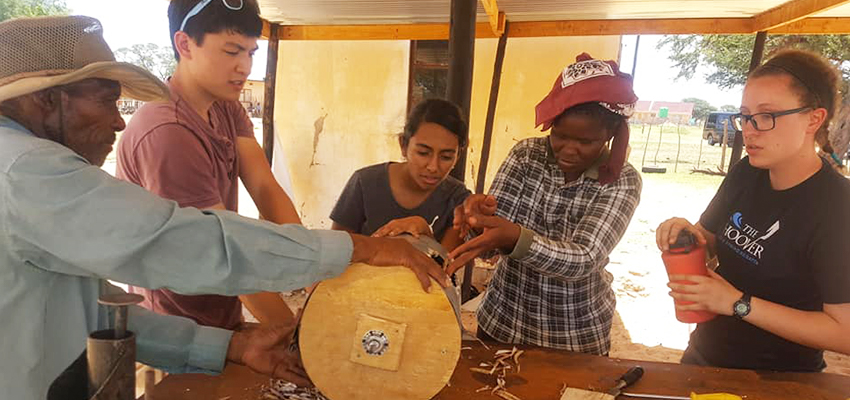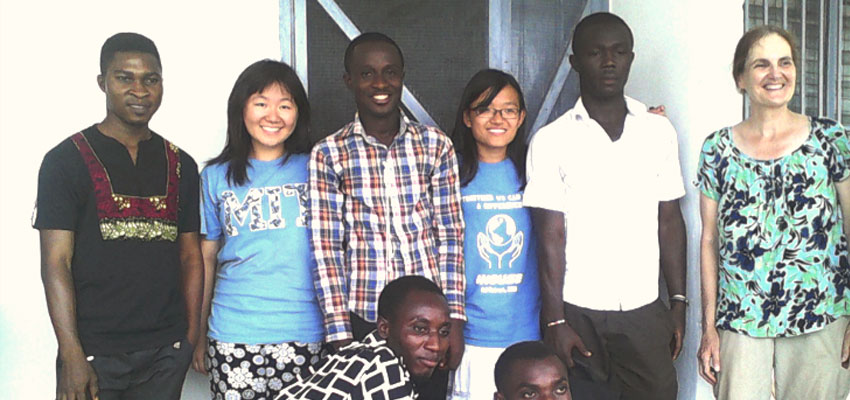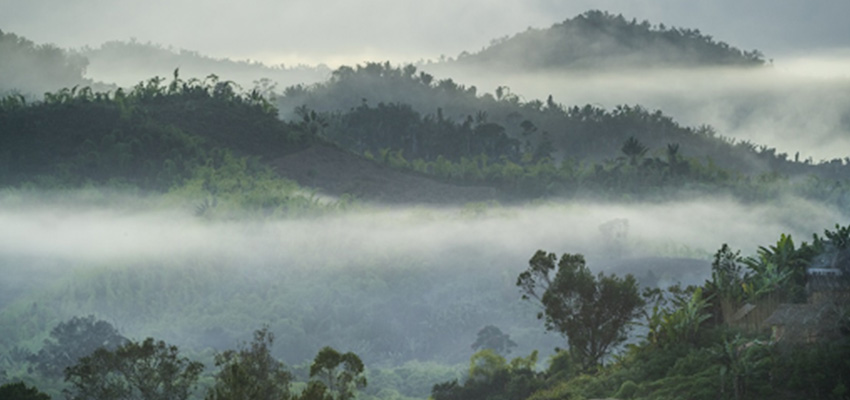
Exploring and identifying the most effective fog harvester designs for maximizing water collection in Madagascar, and developing a scalable construction guide for local implementation.
MIT D-Lab class
D-Lab: Water, Sanitation, and Hygiene (WASH) 2025
Country
Madagascar
Community partner
Tatirano Social Enterprise (Madagascar) - Harry Chaplin, Director,
Karl Zimmermann (Water Treatment Engineer at WSP Canada Inc. and Water Researcher at Univ. of British Columbia, karlzimmwater@gmail.com)
Dr. Tsiry Angelos (Lecturer at Ecole Superieur Polytechnique d’Antananarivo, Madagascar, angelos.andriamanampisoa@gmail.com)
École Supérieur Polytechnique d’Antananarivo (ESPA, Madagascar) (https://asa.polytechnique.mg/)
Team
- Richard Appiah Otoo, Harvard Master of Public Administration Student
- Sampada Nepal, MIT 2028
- Patrick Song, MIT Biological Engineering PhD Student
- Beini Tao, Harvard School of Education Graduate Student
- Laura Dodds MIT Computer Science PhD Student
Fog harvesting for water collection
Access to clean water is a fundamental necessity for human health and development, but many regions around the world continue to face water scarcity. Rainwater serves as a primary water source in many areas, but in arid and semi-arid regions, rainfall is difficult to predict, and its availability is often inadequate to meet the needs of the population. As a result, researchers have explored alternative water collection methods, including the innovative use of water from fog. Fog harvesting has emerged as an environmentally friendly technique for obtaining clean water, producing minimal ecological harm while also providing water that meets World Health Organization (WHO) standards (Morichi et al. 2018). Fog harvesting offers a promising solution to water scarcity, particularly in regions where traditional water sources are unreliable. The core idea of fog harvesting is to construct a mesh or net, which can catch water particles from fog and cause them to condense onto the harvester. The condensed water then falls into a water collector and can be used for drinking water.
In our project, we constructed multiple fog harvesting prototypes and evaluated their construction efficiency and robustness of different techniques. We created a construction document outlining how to build these harvesters. Following the conclusion of the class, in conjunction with the team in Madagascar, we aim to test the efficiency and robustness of these designs in Madagascar, building upon previous designs.
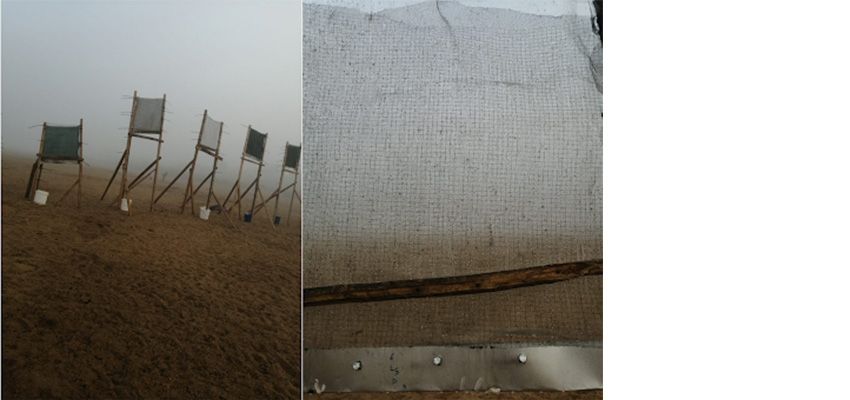
Fog harvesting design
Existing research on fog harvesting has focused on optimizing the efficiency of water collection through variations in mesh materials, structural designs, and environmental considerations. While these factors have been well studied in laboratory-based settings or specific real-world deployments, the goal of our project is to investigate how these fog harvester advancements can be translated to the context of Madagascar. We constructed both harp-based and mesh-based fog collectors, sharing our insights with the Madagascar team. Our initial fabrication drawings are shown below.
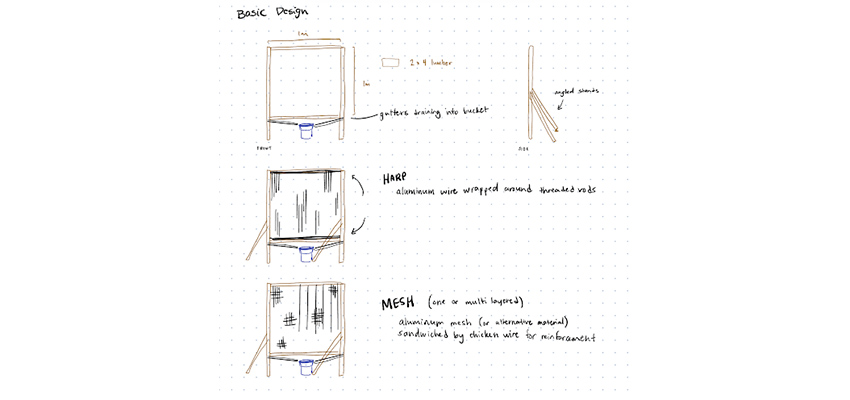
This semester, we chose to test both harp-based and mesh-based designs to compare the construction challenges and efficiency in the context of Madagascar. We started with a wooden frame construction (approximately 2m x 1m) upon which we could test our two different fog harvester models.
For our harp design, we experimented with metal wire looped around threaded rods at the top and bottom of the harvester. The threaded rod acts to keep the neighboring wires from tangling. We experimented with different types and thicknesses of wire, aiming to balance both harvester efficiency (based on the theoretical models in existing literature) with construction efficiency. Our first set of experiments leveraged a very thin (0.2mm diameter) steel wire, which tangled quickly, making the harp difficult to construct. We also tested thicker wires as well as wires that retain their shape when they are bent.
For our mesh designs, we tested two different materials (polyethylene and aluminum) as well as construction techniques (single mesh or bound to chicken wire). The mesh construction demonstrated markedly improved build efficiency and simplicity, with a quick zip-tie approach to secure the material to the frame. As seen in the image below, single mesh attachment results in loose regions that can get caught by harsh winds; whereas securing the mesh to a layer of chicken wire allows for a more durable design.
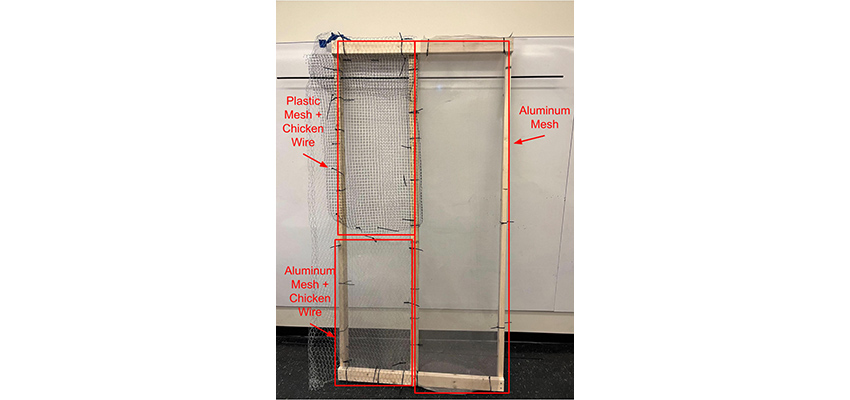
References
Morichi, G., et. al. (2018). Novel Applications for Fog Water Harvesting. Journal of Geoscience and Environment Protection, 2018, 6, 26-36.
Contact
Libby Hsu, Lecturer, MIT D-Lab Associate Director of Academics



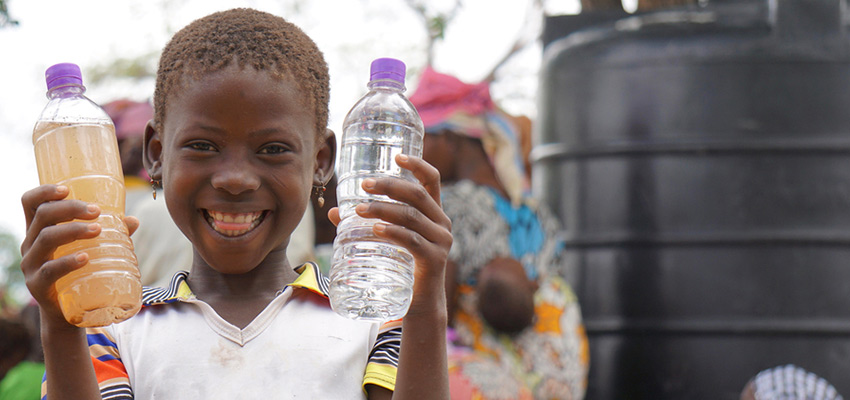
![More than 30 from MIT [including a D-Lab: WASH alumna and D-Lab Scale-Ups Fellow] named to Forbes 30 Under 30 lists](/sites/default/files/2018-12/Forbes%2030%20under%2030_0.jpg)

